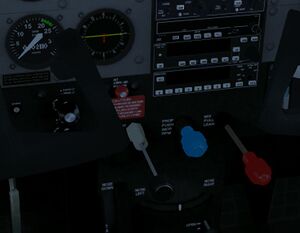Constant speed propeller

Background
Before the invention of Constant speed Propellers the pitch of the propeller blades was fixed on the ground and no adjustment to the phase of flight was possible. However, the propeller pitch has important consequences for the generated thrust and also for the high-rpm/low-rpm flight regimes (climb, cruise):
- High RPM gives much power, but also consumes alot of fuel and generates heat
- Low RPM is more economical, but also does not deliver high power
With airplanes equipping a constant speed propeller, the pitch of the propeller blades is variable and can be adjustet to the needs of the different phases of flight. A device so-called "Governor", takes care of maintaining the pitch that is requested by the pilot. It does this by pumping engine oil into a device located at the spinner, adjusting the oil pressure which then actuates a lever rotating the blades. When the blades rotate to accomodate a low-rpm setting, they "eat more air" per revolution of the spinner and thus need more torque from the engine, slowing it down. This prolonges engine life and saves fuel without severily compromising airspeed and can be viewed as some sort of "gear shift" like in a car.
How it is operated
The pilot can adjust the desired setting using the blue cockpit lever, directly setting the desired engine RPM. The full-in setting usually is the "high-rpm" setting desired at takeoff and climb, while the full-out setting is "low-rpm" desired at cruise.
When failing, most constant speed props are designed to "fail forward", that is to the "high-rpm" setting for safety reasons.
Changes to the blue lever should occur in the "low power" configuration:
- when moving to a higher RPM setting, do it before opening the throttle more
- when moving to a lower RPM setting, do it after closing the throttle more